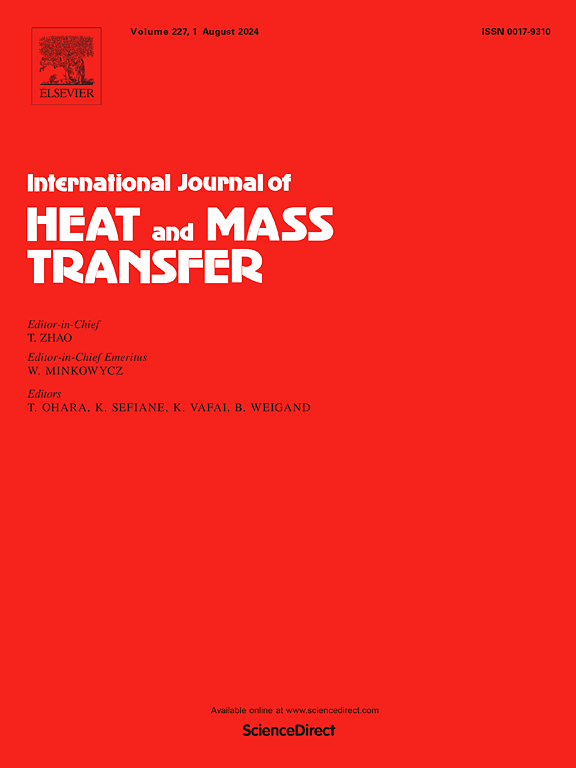A thermal boundary resistance model via mean free path suppression functions and a Gibbs excess approach
IF 5
2区 工程技术
Q1 ENGINEERING, MECHANICAL
International Journal of Heat and Mass Transfer
Pub Date : 2025-06-25
DOI:10.1016/j.ijheatmasstransfer.2025.127417
引用次数: 0
Abstract
The impact of interfaces and grain boundaries on heat transport is often quantified in terms of thermal boundary resistance. Numerous models have been proposed over the years to describe this resistance. Recent experimental results in thermal conductivity imaging have highlighted the possibility of a local suppression in conductivity around material grain boundaries. In this work, we propose a semi-empirical model to predict the thermal conductivity profile as a function of distance to a boundary, to help explain experimental observations. The model is based on a geometrical suppression in the phonon mean free path and accounts for phonon transmission at the boundary. Calculated excess thermal boundary resistances, extracted from spatially dependent thermal conductivities with a Gibbs excess approach, are well-matched with predictions from the Landauer formalism when considering heat flow normal to the boundary. This agreement holds for different material systems and over temperature. The excess thermal resistance is thus expected to represent well the theoretical boundary resistance. The model in this work provides novel insights on the expected spatial extension of interface thermal effects, aiding the interpretation of thermal conductivity images. Rationalizing the impact of specific defects on heat transport can significantly advance the design of materials and devices for applications in energy, heat management and electronics.
基于平均自由程抑制函数和吉布斯过量法的热边界阻力模型
界面和晶界对热传递的影响通常用热边界阻力来量化。多年来,人们提出了许多模型来描述这种阻力。最近热导率成像的实验结果强调了在材料晶界附近局部抑制电导率的可能性。在这项工作中,我们提出了一个半经验模型来预测导热系数曲线作为到边界距离的函数,以帮助解释实验观察结果。该模型基于声子平均自由程的几何抑制,并考虑了声子在边界处的传输。利用Gibbs过剩方法从空间相关导热系数中提取的计算出的过剩热边界阻力,在考虑向边界法向的热流时,与Landauer形式的预测相匹配。此协议适用于不同的材料体系和温度。因此,超额热阻可以很好地表示理论边界阻力。该模型为界面热效应的预期空间扩展提供了新的见解,有助于热导率图像的解释。合理化特定缺陷对热传递的影响可以显著推进能源、热管理和电子应用的材料和设备的设计。
本文章由计算机程序翻译,如有差异,请以英文原文为准。
求助全文
约1分钟内获得全文
求助全文
来源期刊
CiteScore
10.30
自引率
13.50%
发文量
1319
审稿时长
41 days
期刊介绍:
International Journal of Heat and Mass Transfer is the vehicle for the exchange of basic ideas in heat and mass transfer between research workers and engineers throughout the world. It focuses on both analytical and experimental research, with an emphasis on contributions which increase the basic understanding of transfer processes and their application to engineering problems.
Topics include:
-New methods of measuring and/or correlating transport-property data
-Energy engineering
-Environmental applications of heat and/or mass transfer

 求助内容:
求助内容: 应助结果提醒方式:
应助结果提醒方式:


